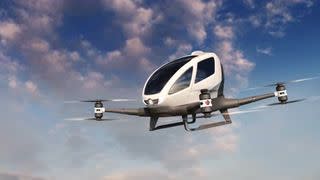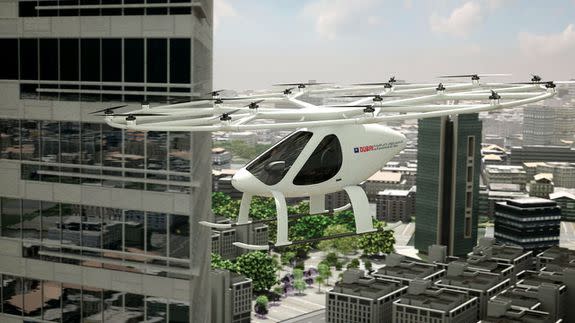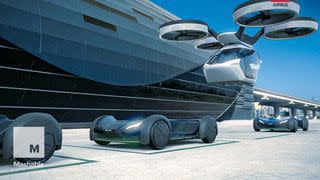Dubai's self-flying taxis are primed for takeoff later this year


The "Future City" is about to add another space-age service you won't find anywhere else in the world: autonomous passenger drones.
Dubai's much-hyped autonomous aerial taxi (AAT) service, which made waves back in February when it was announced as part of its World Government Summit, is finally, officially on track. The city's Roads and Transport Authority (RTA) just announced a new testing schedule for the program and signed a new a new deal with German aviation company Volocopter, which will provide the aircraft for the program.
The autonomous drone taxis will fly passengers on predetermined routes throughout the city, serving as more of a sky shuttle service than a true go-anywhere taxi. The test period will start sometime during the fourth quarter of this year, and the RTA expects to continue on a trial basis for about five years until the proper legislation is in place for a bigger expansion.
SEE ALSO: Toyota-backed flying car prototype has a hard time, well, flying
The first version of the air taxi project used the Ehang 184, a 500-pound, single-seat passenger drone. The Dubai RTA didn't say why it was now switching to Volocopter aircraft but touted the company's reputation for safety. The craft that will be used in the trials, the Volocopter 2X, is a two-seater, which could give it the edge over the smaller single-passenger Ehang.
The crafts are fully electric, with 18 rotors and nine independent battery systems that can pick up the slack to keep the craft in the air if anything fails mid-flight. Volocopter claims the quick-charge battery can be fully juiced in as little as 40 minutes for a max flight time of about 30 minutes. That's at the standard cruising speed of 50 km/h (around 30 mph) and a top speed of 100 km/h (about 62 mph).

Image: volocopter
The project was originally slated to begin next month, but the RTA pushed the trial period to the fourth quarter of the year to make sure the system is truly ready before the crafts take to the air. The RTA said it's working closely with the Dubai Civil Aviation Authority to iron out legislative and operational guidelines, along with more exact standards for potential taxi service operators to have all the pieces in place before the "commercial and official operation" of the AATs.
This is just the start for flying taxis, with companies like Airbus rolling out their own projects — but Dubai is ahead of the curve. The city is lined up as one of the first two targets for Uber's flying car initiative, with plans to have a working prototype and possibly even passenger flights as part of Dubai's Expo 2020 event.
WATCH: Airbus’ new flying car concept looks like it's straight out of ‘The Jetsons'

